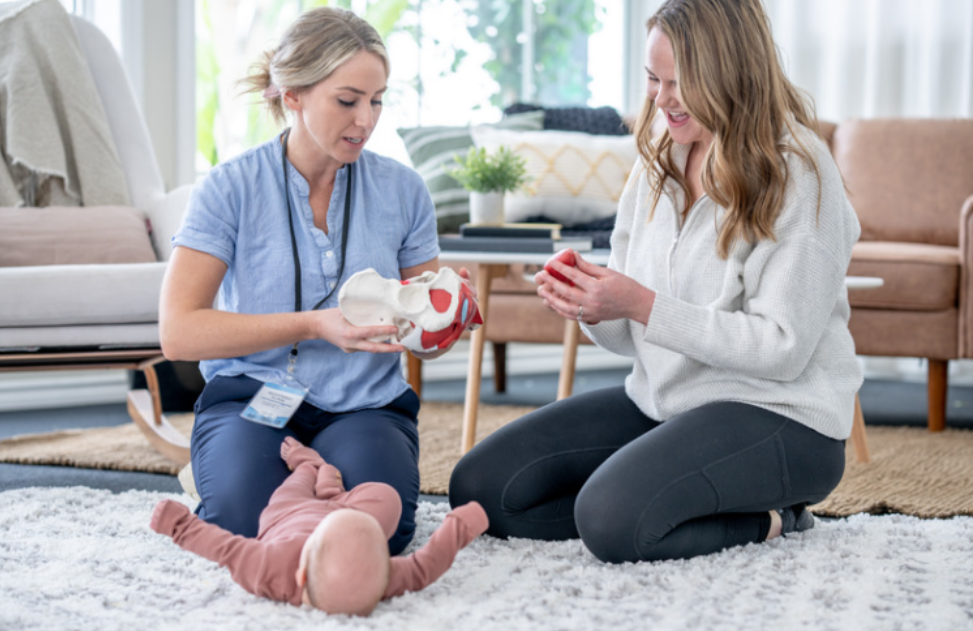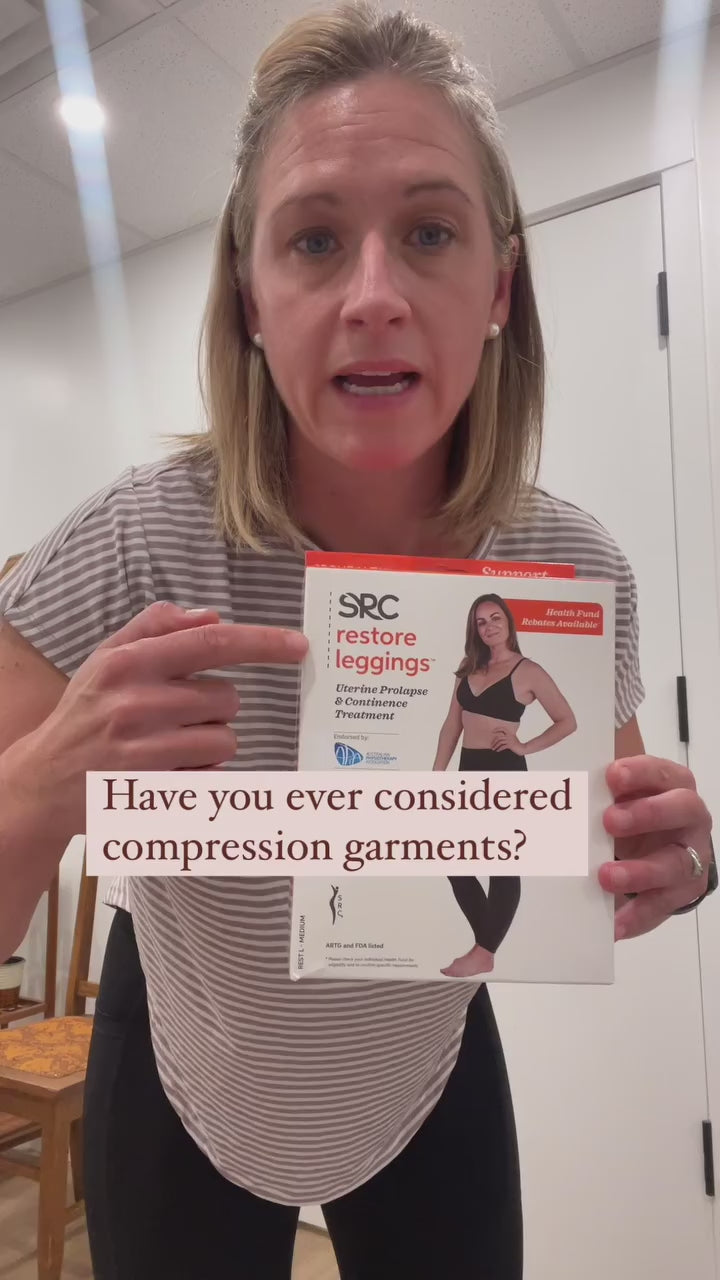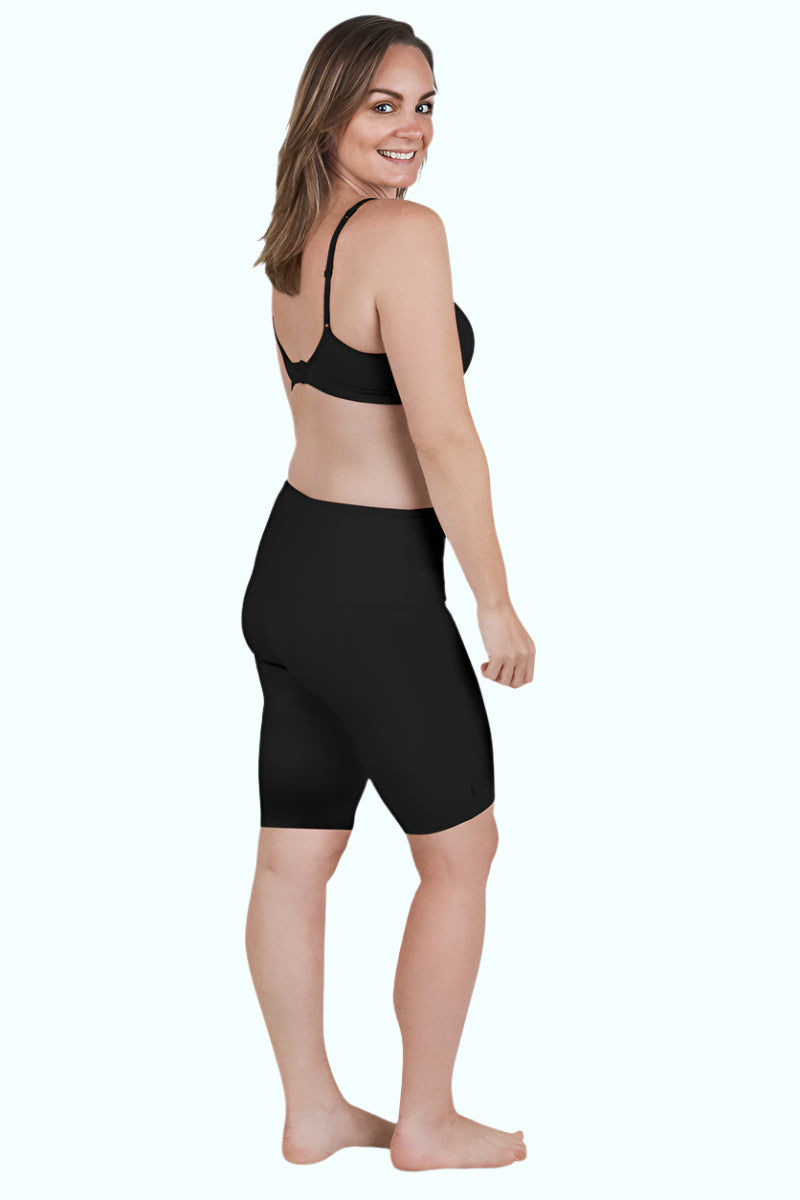Approximate Reading Time: 12 minutes
- Look after your mental health
- Get pregnancy fit and stay fit throughout your pregnancy
- Healing wounds and stitches is a vital step in your C-section recovery journey and gentle constant compression plays an important role
- Protect your weakened pelvic floor muscles
- Get the support you need to improve mobilityGet the support you need to improve mobility
- Healing Abdominal Muscle Separation or DRAM is another critical step in C-section recovery
- Take it easy and return to exercise gradually
Most Commonly asked Questions About C-Section Recovery
How many women deliver by C-section or Caesarean?
Approximately 32% of women in Australia deliver by C-section. In the USA the figure is almost identical and in many other countries the rates are even higher, with Brazil, Turkey and Egypt all being over 50%. That’s a lot of women who need to be prepared to deal with a major abdominal operation and find the information, services and products that can assist them in their safe recovery.
Difficulty with walking and getting in and out of bed are common after giving birth, precisely during one of the most challenging times for a new mother, especially one who has undergone a C-section. She needs to not only speed up c-section recovery but also care for her newborn baby; lifting, feeding, bathing, and caring for a bundle of joy that is completely dependent on her.
The following are 7 factors that play a critical role in speeding up recovery after pregnancy, and these are especially important for C-section recovery.
Is C-section Recovery Painful?
Recovering from a C-section will be different for every woman.
A C-section, or caesarean, is major abdominal surgery and it’s astonishing that women are often expected to care for their newborns immediately after their drip and catheter are removed, usually the day following the operation! Being prepared for all scenarios is the best way of removing any surprises on your journey through postpartum.
Pain is most intense in the first few days after a C-section but usually decreases over the following weeks. Most women feel much better by 6 to 8 weeks. Doctors typically prescribe painkillers and anti-inflammatory medications.
Elective C-sections are usually performed under spinal anaesthesia, while many emergency C-sections are done under general anaesthesia, and each will affect recovery differently.
The incision is generally horizontal at the top of the pubic hairline, about 10-15 cm long. However, a vertical incision may be necessary for conditions like placenta previa - a condition during pregnancy where the placenta partially or completely covers the cervix, the opening to the uterus that leads to the birth canal.
C-section incisions can be closed with stitches or staples. Dissolvable stitches don't need removal, while staples are removed by a doctor sometimes with local anaesthesia, making the procedure mostly painless.
Other potential sources of pain include:
- Back pain from the epidural or spinal block, which should subside in a few days.
- Persistent back pain due to pregnancy weight, not the C-section, may last for weeks.
- Consult a doctor or physiotherapist if back pain continues 10-12 weeks after delivery.
- C-section scars may cause pain, hypersensitivity or numbness for months or years due to nerve sensitivity or scar tissue.
If you have ongoing pain or concerns, consult your doctor promptly.
Is C-section Recovery Easier the Second Time?
Yes and No. It's easier because you know what to expect and how to manage your recovery. However, recovery time is similar to your first C-section, but with the added challenge of caring for one or more children at home.
Having a good recovery plan and adequate assistance from your partner, family, and friends is crucial. As the saying goes, "it takes a village."
Factors affecting recovery include:
- Your overall health during and prior to pregnancy
- The amount of help you have at home
- The age and needs of your other children

Is c-section recovery harder with twins?
According to the website “What to Expect” the postpartum period can be more difficult with twins. It may take longer due to the simple fact that you have 2 babies to look after. Your workload effectively doubles, bathing, nappy changes, and putting them to sleep all add up. So, you are using more energy, potentially getting less sleep or even time to simply relax and let your body heal.
This is even more reason to be prepared in your 4th trimester and if possible, enlist the help of relatives and friends.
How Long Does Recovery from a C-section Take?
Pregnancy has been recently and correctly likened to a marathon by many in the medical community. After any grueling physical activity, like a marathon, a pregnancy, a heavy weights session in the gym or any High Intensity Interval Training it is critical to give your body the opportunity to recover and repair itself. This is especially important if your postpartum recovery also includes a C-section, recovery from which is the same as from any major abdominal operation, a surgery from which you need to give yourself time to heal.
Typically, you'll stay in the hospital for 2-4 days and need 10-12 weeks of rest while caring for your baby. Recovery varies for each woman.
- Low-impact activities: Many women can start walking or light exercise around 6-8 weeks post-birth.
- High-impact exercise: Should be avoided until at least 12-16 weeks after the C-section.
A slow return to daily routines is safer. Consult your doctor before resuming normal activities and consider a personalized recovery plan from a women's health physiotherapist.
Although many mothers may have a planned or elective c-section, many will have emergency C-sections, hence preparation is key in fast tracking your c-section recovery.
What does faster C-section recovery after pregnancy mean?
It can mean different things to different people at different stages of their postpartum recovery which is why it is important to adopt a holistic perspective that addresses all factors that can speed up C-section recovery and assist in returning new mothers to optimal health.
Certain aspects of a C-section recovery are somewhat similar to recovery after a vaginal delivery but with the added challenge of recovery following major abdominal surgery.
The following are 7 factors that play a critical role in speeding up recovery after pregnancy, and these are especially important for C-section recovery.important for C-section recovery.
1. Look after your mental health.
Recovery after giving birth is one of the most challenging times for women and their families. Emotional and mental health is just as important as physical, with the two being intrinsically linked. Perinatal anxiety and depression are common, have many faces and do not discriminate – they can affect anyone, and can have devastating consequences for individuals and families if left untreated. If you or someone you know is struggling with perinatal anxiety and depression please seek assistance by visiting PANDA– Perinatal Anxiety & Depression Australia depression please seek assistance http://www.panda.org.au or calling the National Helpline 1300 726 306 or alternatively Postpartum Support International http://www.postpartum.net/ to find support in your country.to find support in your country.
2. Get pregnancy fit and stay fit throughout your pregnancy.

It is said that the fitter you are before getting pregnant and the fitter you stay through your pregnancy, the faster you are likely to recover after C-section. Here is a great article on “getting fit for pregnancy”, and starting your journey on the right foot.
Most importantly do not stress, if you are already pregnant it’s not too late to start, in fact today many women make it a priority to start looking after themselves as they get pregnant. Just make sure you consult your health care professional for a suitably gentle routine. Here’s an Just make sure you consult your health article that looks at exercises during pregnancy regardless of your level of fitness.looks at exercises during pregnancy regardless of your level of fitnes
3. Healing wounds and stitches is a vital step in your C-section recovery journey and gentle constant compression plays an important role.
This graphic video takes you through the C-section procedure as well the steps of recovery after C-section. What many of the articles on C-section recovery fail to mention is that healing is accelerated with Rest, Ice, and Compression to the C-Section wound.
It is not easy getting in and out of bed with a “smarting” wound as swelling around the wound makes the sutures somewhat tighter and movement puts tension on that wound. Any incision causes trauma and swelling to the surrounding tissue.

Application of compression to the C-section wound reduces swelling to the area and improves healing. Research has shown that applying compression to an abdominal wound following surgery reduces swelling and therefore pain and increases mobility.
Compression should be gentle and constant, not just for healing but for the practicality of being able to function whilst your body is healing. Although there is no shortages of sports compression clothing out there, there are very few specialist post-partum compression garments that are designed specifically for this purpose and even fewer that are backed by evidence of their efficacy. Early mobilisation is not only encouraged but recommended after any abdominal surgery to reduce the risk of deep vein Thrombosis (DVT).
To support your C-Section wound and surrounding muscles SRC C-Section Recovery Shorts are ideal for increasing muscle support and allowing you to become mobile sooner, subsequently reducing the risk of DVT.
Janette Yee, Perinatal Therapist and C-Section Recovery Specialist, recommends SRC Health compression post C-Section
SRC Recovery Shorts and Leggings were designed in consultation with an obstetrician to assist with providing constant gentle compression to swollen and sutured areas. They also assist with back support, healing abdominal muscle separation (DRAM) and perineal trauma/stitches.
A garment that is tight and restrictive should not be worn for recovery after delivery as it places too much compression on your muscles and may not allow them to work. This ultimately can cause further muscle weakness.
A belly band or postpartum belly wrap, if worn excessively tight may potentially adversely affect blood circulation, pelvic floor health, bowel function and may cause muscle deactivation of your lower abdominals and back.
Gentle compression in the SRC Recovery garments avoids muscle deactivation and allows for 24-hour wearability and pain relief.
Check out the NEW SRC C-Section Recovery Shorts and improve the mobility required to look after your baby.
Here are some C-section recovery testimonials from delighted SRC customers and there are hundreds more on the website.
"After having my baby by emergency C-section, I was feeling pretty sore and sorry for myself. I was keen to get back into my daily exercise routine but didn’t know how to go about healing myself with that goal in mind. SRC Recovery Shorts made the weeks after birth much more comfortable and, therefore, made me more confident in returning to my normal work routine, while learning how to be a Mum!”
--- Jo Stanley, Fox FM “The Matt and Jo show”, Melbourne
“Having an emergency C section, I was concerned that my recovery and getting back to normal physical activity post baby would take much longer than planned. As a result, I thought getting back into my pre-pregnancy clothes would take months to achieve. But a girlfriend recommended I try the SRC Recovery Shorts. I slipped on the shorts two weeks after having Piper and I was amazed at how quickly my body recovered. I was back in my pre-baby jeans a week later. I had also encountered some pain in my lower back in the early days post-baby, but I found the SRC Recovery Shorts offered great support and relief, making breastfeeding and lifting my bub in and out of her cot a pain free experience.”
--- Michelle Stamper, Channel 9 Publicity and Marketing
“I had a Caesarean section at 36 weeks due to complications. This left me understandably sore. My physio recommended the SRC Recovery Shorts. The shorts are amazing, they are comfortable and supportive at the same time. I notice a big difference in the pain from my C-section wound when I am not wearing the shorts to hardly any pain when I am wearing them. I would highly recommend both the pregnancy shorts and recovery shorts.”
--- Jacqueline Casey
“I have never had a C-section before and didn’t know what to expect. The first time standing up was hmmm shall I say ‘interesting’...Nath had to put these on me the first day, stretching the top. Once on - I could walk again! Seriously a godsend. Number one, hands down, the best product I packed...I swear by SRC recovery shorts and they helped me with my confidence post C-section.”
helped me with my confidence post C-section. --- Sophie Guidolin, Australian born fitness model and mother of four. http://sophieguidolin.com.au/http://sophieguidolin.com.au
4. Protect your weakened pelvic floor muscles.
Having a C-section will not prevent incontinence. Nearly 5 million Australians experience bladder or bowel control problems. The Continence Foundation of Australia's provides information on funding, referral and products. They offer free resources for individuals, careers and professionals and you can phone a nurse on 1800 33 00 66 for free advice. www.continence.org.au has a wealth of information. Choosing to have a C-section alone will not prevent incontinence.3 One of the most enduring myths surrounding birth is that a C-section prevents damage to the pelvic floor. The pelvic floor is a group of muscles, ligaments, and tissues, which support the organs of the pelvis: bladder, uterus and bowel. The pelvic floor supports these organs, however, if muscles are weakened, or ligaments are stretched, different forms of incontinence and prolapse can arise:
- Urinary incontinence affects 30-50% of childbearing women by age 40 especially during extra exertion, such as coughing or running, sometimes referred to as stress incontinence.
- Faecal incontinence, wind or stool affects up to 25% of childbearing women.
- Prolapse occurs when pelvic floor muscles, ligaments, and tissues are weakened causing a prolapse of the vagina, bladder, rectum, or uterus.
The best way to reduce your risk of incontinence is to protect and strengthen your pelvic floor muscles which in turn will assist in speeding up your overall C-section recovery. According to a leading Women’s Health Physiotherapist, Shira Kramer of BeActive Physio, pelvic floor exercises can usually start within a few days after a C-section as tolerated, and a slow return to walking over the first few weeks. The benefits of exercising in motherhood are well known – not only the physical benefits (posture, core, pelvic floor, back health) but also for psychological well-being or the ‘feel good’ factor. After a C-section it is important to allow core and pelvic floor recovery:
- Avoid lifting anything heavier than your baby, and get help wherever possible
- Roll on to your side when lying down before sitting up
- Rest horizontally as much as possible
The first 6 weeks is really about rest, allowing recovery and enjoying your baby.
The Australian Continence Foundation says you can protect your weakened pelvic floor muscles if you squeeze, lift, and hold your pelvic floor muscles before you sneeze, cough, blow your nose or lift. Some other tips include:
- Cross your legs and squeeze them tightly together before you cough or sneeze
- Avoid lifting heavy loads
- Avoid bouncing exercises
- Do pelvic floor muscle training to strengthen your pelvic floor muscles - there are some great videos here http://www.pelvicfloorfirst.org.au/pages/videos.html
- Avoid getting constipated (drinking enough water and getting sufficient fibre will help)
- Avoid straining when you go to the toilet. Avoid straining when you go to the toilet
- Get the support you need to improve mobility.

5. Get the support you need to improve mobility.
Mobility is critical to all new mums as they endeavour to heal themselves and begin caring for their baby. This comes with new and physically challenging demands and raises the question of what to wear during C-section recovery?
The SRC C-Section Recovery Shorts provide you with the support to move more freely post-delivery and make lifting, feeding, bathing and caring for your baby much easier.The SRC C-Section Recovery Shorts provide
6. Healing Abdominal Muscle Separation or DRAM is another critical step in C-section recovery.
Healing DRAM is more challenging due to C-section recovery presenting an extra stage in the process. Like everything else in the body, the different organs and muscle groups are connected and interrelated, and no part of you works or lives in isolation. Your
abdominal muscles, pelvic floor and back muscles are all interdependent on one another.
DRAM can have a number of implications for pre and post-natal women. It can affect the stability of the trunk and has been shown to contribute to pelvic floor dysfunction, back and pelvic pain and hernias. A separation persisting after 4 weeks postnatally is likely to disrupt the function of the abdominal musculature. This may be a factor in causing:
- persistent post-natal lumbar pain
- pubic symphysis and sacroiliac joint pain
- hernia
- poor posture
- increased aches and pain in future pregnancies
- protruded stomach and
- incontinence due to the interaction of the pelvic floor and abdominal musculature as a stabilising unit” said Shira Kramer, a Women’s Health Physiotherapist from Be Active Physio and the founder of Restore Your Core Program.
DRAM needs to be addressed as soon as possible and all of the resulting issues need to be taken into consideration especially those most debilitating, such as continence.
One of the deep abdominal muscles, also known as the transverse abdominis, play a crucial role in providing stability and support to your lower back, pelvis, and abdomen. Gradual exercises of these muscles help to safely rebuild strength in your deep tummy muscles to support the healing process and prevent future complications. By strengthening these muscles, you can improve your overall core stability, reduce the risk of future injuries, and even improve your posture and body mechanics.
Adding stretches such as pelvic tilts, cat/camel, and back rotation can also promote joint flexibility and tone.Adding stretches such as pelvic tilts
Walking is also an excellent low-impact exercise to start with.Adding stretches such as pelvic tilts, cat/camel, and back rotation can also promote joint flexibility and tone.
7. Take it easy and return to exercise gradually.
Approximately 6-12 weeks after the C-section when you have regained your mobility and generally feel ready, you can resume exercise with the approval of your health care professional.
All women including those that have had a c-section are encouraged to exercise their pelvic floor muscles and deep abdominal muscles in the first weeks post-delivery. During pregnancy, these muscles can become weakened or stretched, which can lead to issues such as lower back pain and pelvic floor dysfunction. Even if you do not have symptoms.
Pelvic floor exercises provide many benefits and will help with the following:
- Prevent or reduce urine leakage
- Maintain or control your bowel
- Improve sexual function
- Prevent or reduce pelvic organ prolapse
- Improve your core and strength to support your back and pelvis
Start with gentle pelvic floor exercises a few times a day after birth in lying and sitting. You should be able to feel the muscles tighten and also let go when you relax fully. Gradually increase your repetitions and hold time as you progress throughout the weeks. Your pelvic health Physiotherapist can help you with this.
The physiotherapists at BeActive Physio urge new mums to return to exercise gradually:
“At approximately 6 weeks you can progress to gentle core exercises and resistance / weights exercises and low impact cardio options (e.g.: bike). The recommendation for returning to running and high impact exercise is a minimum of 3-6 months. It is imperative to allow repair of your abdominal and pelvic floor muscles. See your women’s health physio to give you more specific guidelines and exercises that are tailored to your needs and remember, these timelines are a guide only, there is no one-size fits all approach for recovery.”
It’s a great idea to see a Women’s Health Physiotherapist to reach your goals safely and effectively. Find one in your area by visiting your country’s Physiotherapy Association.
USA: https://www.apta.org/
Australia: https://www.physiotherapy.asn.au/
Wishing you a speedy C-section recovery.














